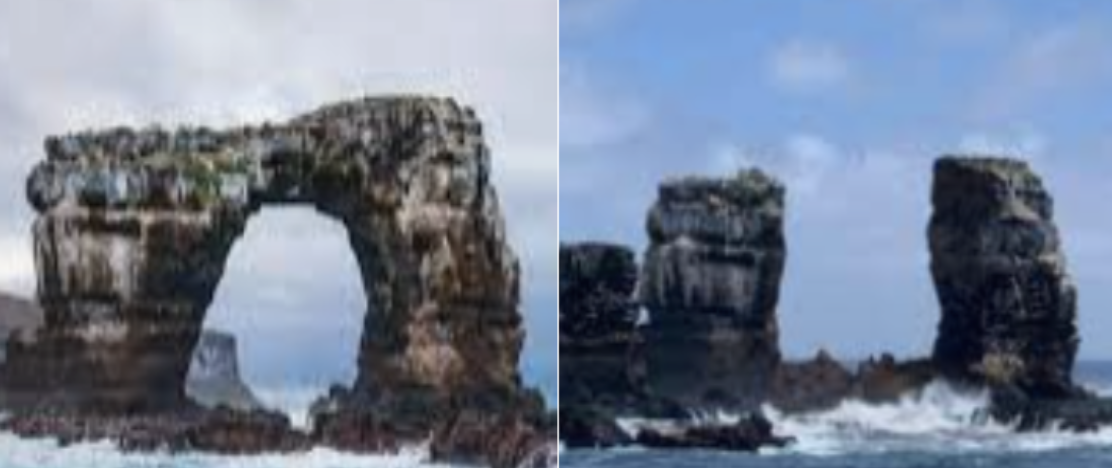Report by Preetinkar Jain
Galapagos, May 24: The famous rock formation called Darwin’s Arch collapsed in the sea on May 17th, 2021. Darwin’s Arch was an iconic natural rock arch situated to the south-east of Darwin Island in the Galápagos Archipelago in the Pacific Ocean. The Ecuadoran Ministry of Environment revealed that the arch collapsed due to natural erosion and only two supporting columns of the structure remain.
The Galapagos Islands consists of a total of 127 islands, islets, and rocks. Out of these only 4 are inhabited. The Galapagos archipelago lies nearly 965 kilometres west of the Ecuadorian Coast. The archipelago is home to various species of plants and animals that are not found anywhere else on earth. It is the only place where pelagic species (the species that neither lives closer to the shore of the sea nor the bottom of the sea) can be seen near the sea shore such as, tunas, spotted eagle rays, golden rays, and hammerhead sharks. It is said that the islands of Galapagos were formed through repeated layering and lifting action of volcanoes. There are 18 major islands having one volcano each.
An archipelago is a group or chain of islands, for example: The Andaman and Nicobar Islands in India, the Galapagos Islands in Ecuador, etc.
The Darwin’s Arch is named after the famous English Biologist, Charles Darwin. He came to Galapagos in the 1830s. His study of finches (conical beaked small birds) in the island helped him describe the ‘Theory of Evolution’.
Fray Tomás de Berlanga, a Bishop of Panama, is known as the official discoverer of the archipelago. He arrived on Galapagos on March 10, 1535. He was sailing from Panama to Peru, but the ocean currents drove his vessel towards Galapagos.
An arch is a curved structure supporting a weight of something above it, such as a bridge. It sometimes forms the structure of an entrance or monument.


